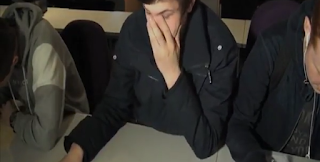What kind of media institution might distribute your media product and why?
In order to distribute our film we will either have to
- Contact a film company who produce low budget films, some examples include

Warp Films
These companies all distribute on a low budget for British films, which could help us attract our target audience as well as adults.
- We could attend UK Film Festivals with our film, this helps get our film out there and hopefully get noticed.
Here is a list of UK Film Festivals for young filmmakers, as you can see they are open to all so it would be easy to distribute our film there and get more awareness.
There are many advantages of submitting your film to a Film Festival an example is
Rob Knox Film Festival
'If you're a film-maker, the Rob Knox Film Festival could be your chance to show your work to the world. If successful, your film could be screened at Cineworld in Bexleyheath and at number of other locations throughout the London Borough of Bexley. Along with film previews there will be a range of free or low cost film related workshops and question and answer sessions with industry experts.'
This gives film makers opportunities of having their film screened and advice from experts so they can proceed onto.
As the marketing for distribution is quickly growing, companies such as Netflix or gaming consoles are becoming increasingly more popular in order to distribute products. We could use this to our advantage by distributing our film onto Netflix so that a wider variety of people can view it.
The most popular companies being used at this age of time is Netflix and YouTube. Both of them very easy to use and very easy for customers to find exactly what they are looking. It also matches our target market of the Teenage generation because they are usually the main contributor who uses Netflix or Twitter. As they are so easy to use it will be easier for people to find our film and access it.
However the film would need initial publicity and promotion in order to get an audience to watch. this could be done through local screenings, DVD press and Social Media (such as Facebook and Twitter), which is the biggest tool in 'spreading the word' in today's evolving society.
Netflix
Overall we will need to either get our film distributed through an independent film company or a film festival to get it to our target audience. I think the Film Festival option is better because it offers awards and gives better opportunities at the end and there is no definite way a film company will distribute the film.










































